Despite all the knowledge that we have at out fingertips, the sight of youth coaches acting like John Sitton on the sideline in games is all too familiar.
It’s not entirely their fault.
Courses don’t always prepare new coaches well enough for game day coaching. It is an entirely different beast to practice. When all a coach really has to go on is their experience as a youngster, you can empathise with their behaviour.
When I started game day coaching for the first time, it was like I had a PlayStation controller in my hand:
“Pass to that person!”
“Run here!”
“DRIBBLE IT!”
I rarely let my players make a decision and treated every game as if it was MY World Cup final.
Thankfully, through trial, error and working with around 400 coaches over the past 20 years, I’ve been able to rectify this. My style is now a lot more beneficial to players development and as such, their success on the field.
The following 5 ideas are staples of my current match day performance and routine
Make your Pre-Game Routine Consistent
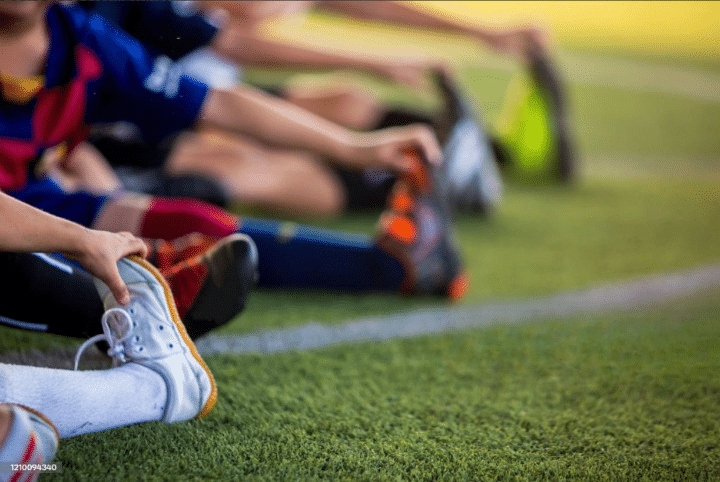
A lot can go on in a child’s life to affect their mood on a Saturday or Sunday morning.
They could have had a bad week at school. They may have had no breakfast. It could be the day after a sleepover, meaning a 3am bed time.
Any one of these things can have a player away with the fairies upon arriving at the field. As coaches we cannot control this.
What we can control is making sure that our pre-match prep is as consistent as possible to ensure the players are in the right headspace come kick off.
My personal plan is as such
Arrive 1 hour before kick off
45 mins before – Warm up starts
Movement Activties for 10 minutes (1 minute per movement)
Water Break 2 minutes
33 mins before – 1 v 1’s for 8 minutes
Water Break for 2 minutes
25 minutes before – Passing and Receiving/Possession Play for 8 minutes
15 Minutes before – Starting line up, Game Plan (linked to previous weeks session) and Referee Check
7 Minutes before – Small Sided Game
2 Minutes before – Team huddle & water break, reminder of the 5 rules (Work hard, listen when coach says something, don’t be afraid of the ball, don’t be afraid of mistakes, play with a smile)
1 Minute before – walk onto the field
Kick Off
I’m very regimented with my pre-game. Warm up starts 45 minutes before kick off with no excuses. If players are late, it still starts.
The cones are set for each activity in the 15 mins before the warm up actually starts. Covering movement and ball work it helps the players prepare their bodies and the Small Sided Game helps them start at game speed.
Additionally, the consistency of activities allows players to move to the next without having to explain how a new practice works.
By naming the team before the last activity, it allows the units (defense, midfield, attack) 5 mins to get accustomed to working with each other prior to the game.
Finally, the team huddle is important to relax the nerves before we start and remind them that the qualities that I want them to show are more important than just winning.
Everyone will have different views on how to set up their game day routine – if you feel a particular activity is needed, more/less time is required, you announce the team before the warm up – and it is up to you to run it as your team needs.
Set Out Your Formation
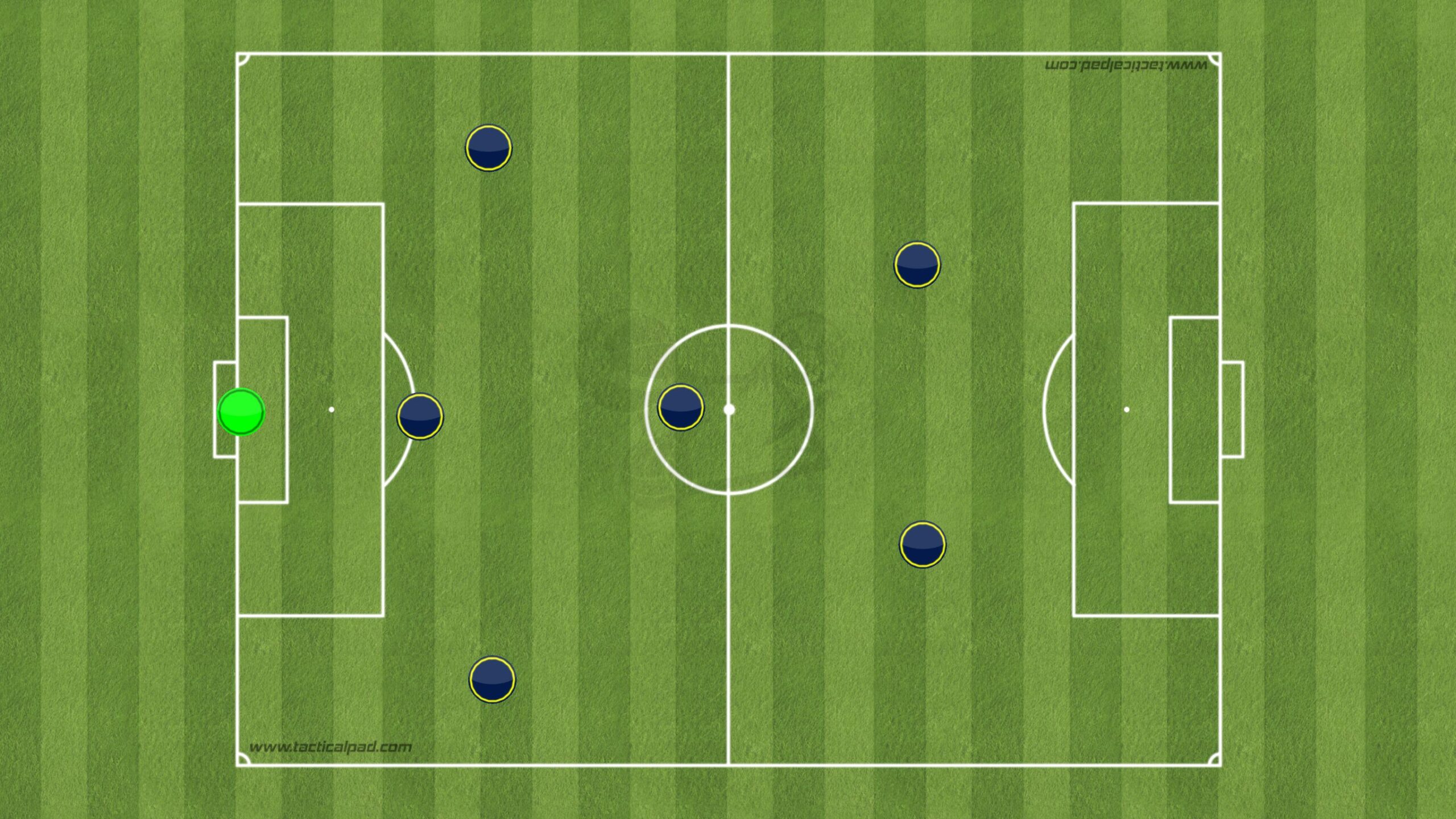
Having worked with children on both the Football pitch and in the classroom, it is evident that many don’t know their left from their right. It is something they will learn over time, but it does not always come straight away.
I have also seen adults have near nervous breakdowns due to the fact an 8 year old, who has been asked to play “left midfield”, has wondered over to the right side. They seem unable to comprehend that a youngster doesn’t know the same as a 35-year old!
Game day is stressful enough for young players.
There is an awful lot going on, so helping them understand what we are asking beforehand benefits everyone. The tactics board can help visual learners, as you can clearly move the markers to show what you are looking for.
Additionally, setting out some cones in your formation and having the players stand at the cones can have similar benefits.
I first saw this from a former colleague of mine. It allowed him to stand his U9 team in their starting positions, rather than just showing them.
It also gives freedom to move players around. For example, if I want to highlight the overlapping defender, I can ask them what happens in a certain situation. Rather than just giving me a verbal answer, the players can physically show me on a micro scale.
It allows for a rehearsal of the movements in a game.
The cone formation also allows our left-right players to see who should be where in relation to where they are standing. By U12, this shouldn’t be an issue, but for U8 & U9 players, this can be very helpful.
Speak to Each Individual
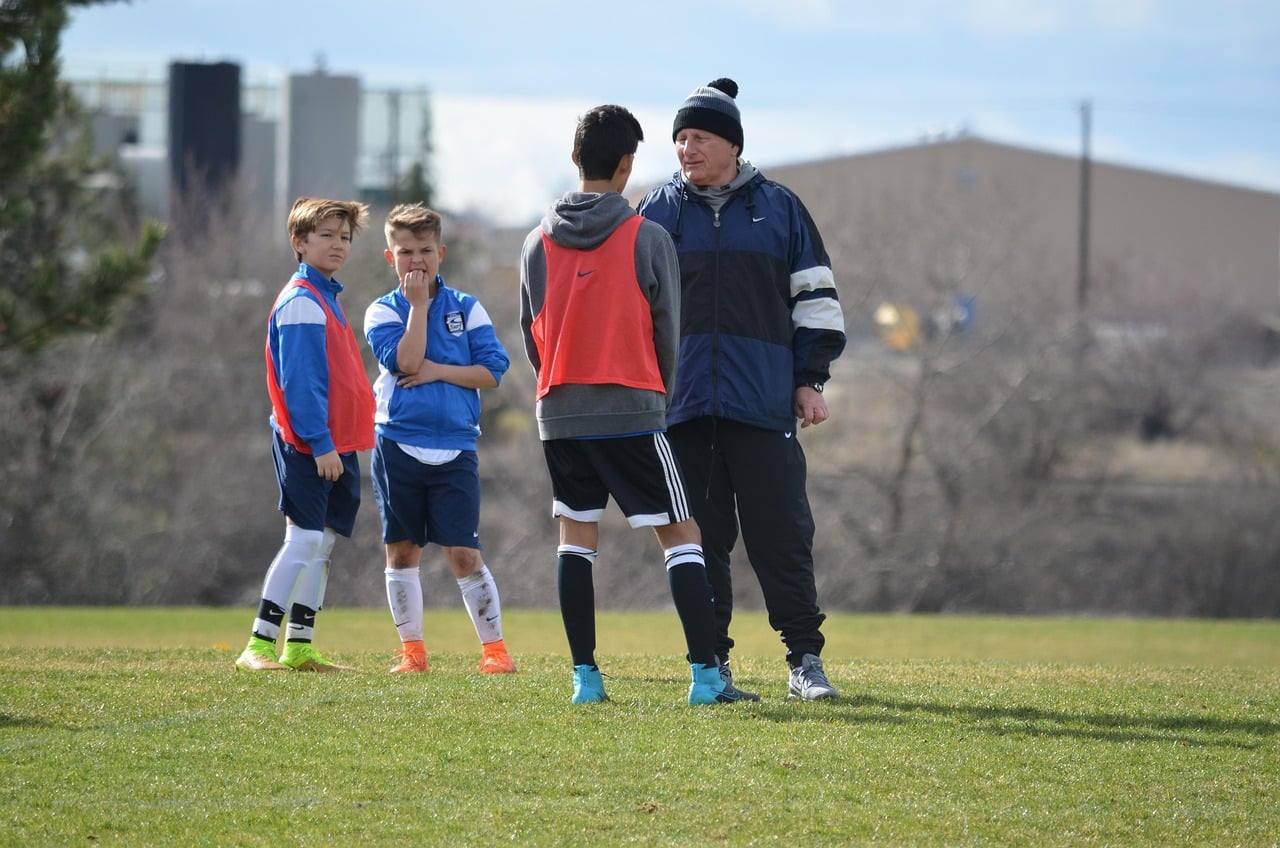
As much as we want our players to operate as a fully functioning team, we also have to consider that we are working with a wide variety of individuals.
Each individual has their own needs. Where one player may need to keep their focus, another needs to slow their game down. One player might just have to carry on where they left off, another needs to think about their passing technique.
Calling these individual challenges out during the team talk is not a good idea. Most children don’t enjoy being highlighted in front of others, unless it’s for something good.
Even though your intentions are to help them, the opposite is often true. A small improvement to you can seem like an insult to them, especially if they have had a rough day.
We also know that when group conversations are happening, any number of players may not be fully listening, or be distracted or not understand exactly what you are asking of them.
Use your warm up to pull players to one side to help give them a target to aim for in the game.
Guide Your Players With Effective Communication
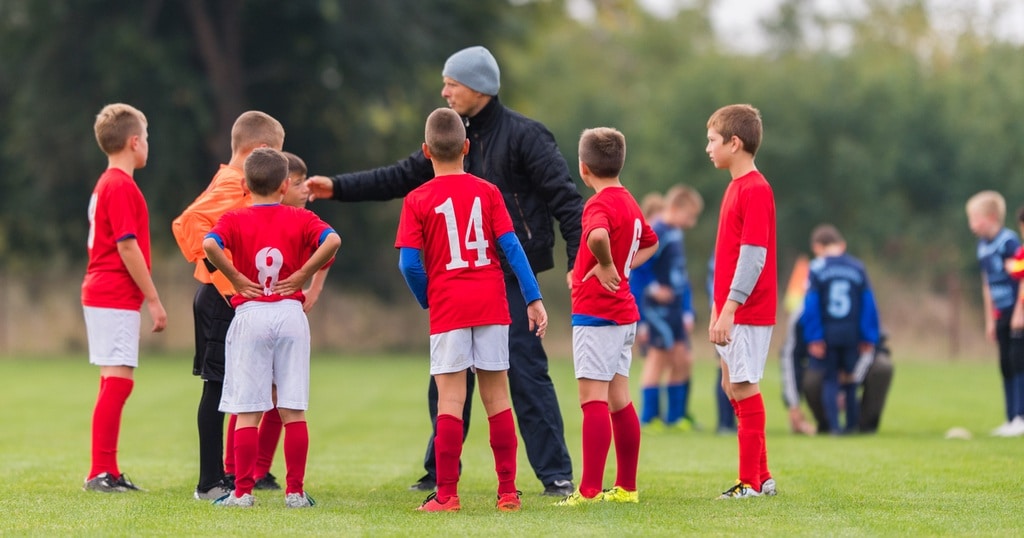
Many coaches are excellent on the training field.
They put on good sessions, give good feedback and information and leave the players feeling a real sense of achievement.
Game day comes around and that goes out of the window.
The way that they communicate with players is by way of instruction (do this), fear (DO THIS!) or the often misunderstood say nothing and let them figure it out.
Players need guidance. They do in practice and also in games.
How we do this as coaches, can have a huge impact on how they enter the youth development phase. Think about your game day communication. Does it include the following
Asking questions
Giving feedback post-decision
Explaining WHY you are asking something of them
Visual and verbal communication
Asking Questions
I once coached a player who had previously been conditioned to stand at the edge of the penalty box to defend her goal, while the rest of the team was in the opposition penalty box.
This was in contrast to my idea of having the defenders push up to the halfway line to win the ball back quicker. As a result, the following questions would be repeated 9-10 times a game.
“Holly, where should you be?”
By asking this question and giving Holly a chance to answer, she got the sense of accomplishment of figuring it out for herself. Had I taken the route of telling her to push forward every time, he dependence on me to tell her what to do would have increased.
By the end of the season Holly was wearing the captains armband and pushing the rest of the defense forward with her.
Giving post decision feedback
I am sure we have all had or seen that coach who felt the need to tell players what to do when they have the ball.
I know I used to hate hearing my coach telling me to pass it to someone else..
There was enough to worry about with the opposition, my team mates and the ball at my feet. I didn’t need or want to hear his voice.
With that extra noise (and two left feet!) my decision-making was average at best.
Post decision feedback has the benefit of allowing players to see the result of what they chose to do. They have an outcome to relate the feedback to.
They can take the information given and either tweak what they need to do next time they are in that situation or it supports the positives of their decision.
Waiting until the ball is out of play to go into detail will make sure that their focus is not distracted by what is happening in the game.
Explain why you are Asking Something of them
Going back to my earlier example with Holly, it wasn’t enough to keep asking her the question.
After she had figured out the answer and started to push forward, I would remind her “when you stand at the half way you can win the ball back quicker if we lose it and if allows an option to pass back if the team needs it.”
I could have done with a dictaphone!
Giving young players the reasons WHY they do something is what makes it stick.
If they need to look up next time, tell them why (can see whether to pass, dribble or shoot).
If someone makes a good pass, explain to them why it was good (body shape, weight, accuracy, technique).
It’s no different to explaining to a child why touching a hot iron is a bad idea, or why showing respect is a good idea. If we give them a reason why, it makes far more sense.
Cover Verbal and Visual Communication
For technical based coaching points, demonstrations are vital.
The field is a big place with a lot of noise. For a player on the far side, they might not be able to hear every word you say.
By demonstrating what you are asking (check their shoulders more for example), players can put together the words you are saying.
For players who can hear clearly, they still may misconstrue your point. They may not fully understand Football terminology. They might still be thinking about what they have just done, so are not fully present in the moment.
As communication is made up of more than just the words we speak, additional actions will support your message.
Make Half-Time A 2 way Conversation
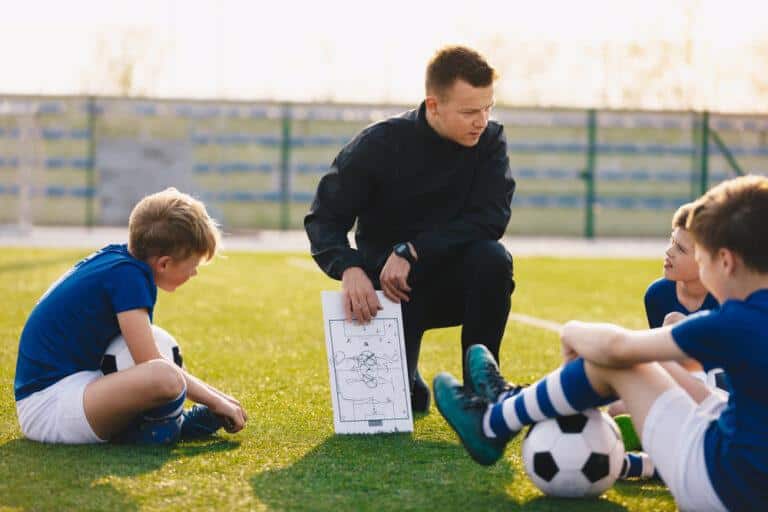
“What do you think you’ve done well?”
“What do you think you need to improve on?”
Before I give my view at halftime, I always these 2 questions.
For the development of creative, motivated, intelligent players, it is important to get them to think about these things.
They have, on occasion, made a point that I have missed or forgotten about, which is of great assistance to me.
People like to be heard and this gives an avenue for players to air their thoughts, positives and grievances.
Putting the onus of communication on them allows that focus to steadily come around. By the time they are done talking, they are all engaged and ready to hear what feedback you have for them.
